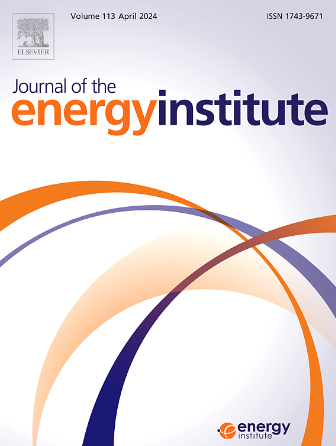Devolatilization predicting model based on coal heterogeneous chemical structure from micro-Raman spectroscopy with neural network
IF 5.6
2区 工程技术
Q2 ENERGY & FUELS
引用次数: 0
Abstract
This study proposes a novel devolatilization model based on a convolutional neural network (CNN), employing quantified coal chemical structure features as input. Initially, a reliable method was developed to quantify the average/heterogeneous properties of coal structures using high-resolution micro-Raman spectroscopy. The evolution of chemical structure with increasing coal rank was investigated using 13C Nuclear Magnetic Resonance (NMR) and micro-Raman spectroscopy. A strong positive correlation was observed between the parameters derived from these two techniques, highlighting their complementarity and enhancing the capability of micro-Raman for analyzing heterogeneous chemical structures. As coal rank increased, the distribution features of different structural types exhibited significant changes, particularly in the heterogeneity of fluorescence-rich and aromatic ring structures, which initially increased and subsequently decreased. Furthermore, the potential of heterogeneous chemical characteristics for predicting coal devolatilization was explored. While the general distribution model (GDM) demonstrated substantial potential in predicting devolatilization, its precision was found to be insufficient. To address this limitation, a CNN was introduced to improve prediction accuracy. The results revealed that compared to the direct use of chemical distribution parameters as input (CNN model), the GDM-CNN model, which incorporates the results from GDM, achieved the highest and most balanced precision. The absolute prediction error for raw and blended samples was consistently below 23.5 °C. This work introduces a methodology for establishing a high-precision devolatilization model by combining quantitative chemical structure analysis with neural networks. This approach can be extended to other characterization techniques and solid fuel samples, demonstrating broad applicability.
基于煤非均相化学结构的微拉曼光谱神经网络脱挥发预测模型
本研究提出了一种基于卷积神经网络(CNN)的新型脱挥发模型,采用量化的煤化学结构特征作为输入。首先,开发了一种可靠的方法,利用高分辨率微拉曼光谱来量化煤结构的平均/非均相性质。利用13C核磁共振(NMR)和微拉曼光谱(micro-Raman spectroscopy)研究了煤的化学结构随煤阶的变化。从这两种技术得到的参数之间观察到很强的正相关关系,突出了它们的互补性,增强了微拉曼分析非均相化学结构的能力。随着煤阶的增加,不同结构类型的分布特征发生了显著变化,特别是富荧光和芳香环结构的异质性呈现先增加后减少的趋势。此外,还探讨了非均相化学特征预测煤脱挥发的潜力。虽然一般分布模型(GDM)在预测脱挥发方面显示出很大的潜力,但其精度却不足。为了解决这一限制,引入了CNN来提高预测精度。结果表明,与直接使用化学分布参数作为输入(CNN模型)相比,结合GDM结果的GDM-CNN模型获得了最高和最平衡的精度。原始和混合样品的绝对预测误差始终低于23.5°C。本文介绍了一种将定量化学结构分析与神经网络相结合建立高精度脱挥发模型的方法。这种方法可以扩展到其他表征技术和固体燃料样品,显示出广泛的适用性。
本文章由计算机程序翻译,如有差异,请以英文原文为准。
求助全文
约1分钟内获得全文
求助全文
来源期刊

Journal of The Energy Institute
工程技术-能源与燃料
CiteScore
10.60
自引率
5.30%
发文量
166
审稿时长
16 days
期刊介绍:
The Journal of the Energy Institute provides peer reviewed coverage of original high quality research on energy, engineering and technology.The coverage is broad and the main areas of interest include:
Combustion engineering and associated technologies; process heating; power generation; engines and propulsion; emissions and environmental pollution control; clean coal technologies; carbon abatement technologies
Emissions and environmental pollution control; safety and hazards;
Clean coal technologies; carbon abatement technologies, including carbon capture and storage, CCS;
Petroleum engineering and fuel quality, including storage and transport
Alternative energy sources; biomass utilisation and biomass conversion technologies; energy from waste, incineration and recycling
Energy conversion, energy recovery and energy efficiency; space heating, fuel cells, heat pumps and cooling systems
Energy storage
The journal''s coverage reflects changes in energy technology that result from the transition to more efficient energy production and end use together with reduced carbon emission.
 求助内容:
求助内容: 应助结果提醒方式:
应助结果提醒方式:


